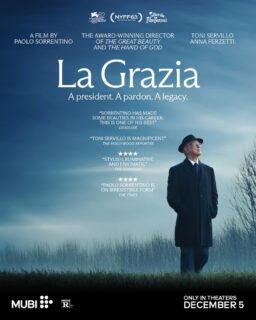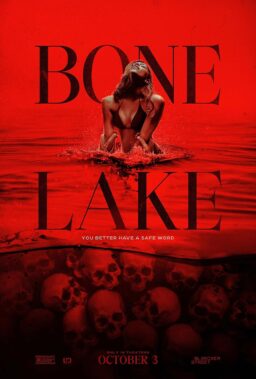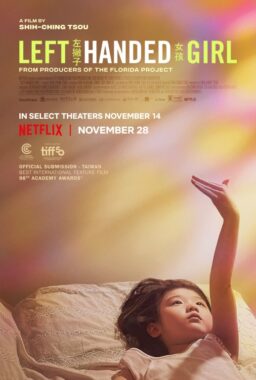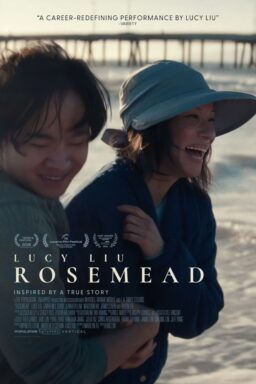The 1994 Chicago International Film Festival will kick off its 30th anniversary season on Thursday with the Midwest premiere of Woody Allen’s “Bullets Over Broadway.” Its star, Chicago native John Cusack, will be in attendance. The festival will end 18 days later, on Oct. 23, with the world premiere of David Mamet’s “Oleanna,” based on the play about political correctness that has inflamed theater audiences.
The strong opener and closer are evidence that festival director Michael J. Kutza Jr. has assembled a superior lineup of entries to cap his third decade at the helm. And this year’s festival seems better positioned than in many years past, when Kutza migrated from one venue to another with a slate that often seemed swollen by second-rate films.
This year, the festival takes place in three of Chicago’s top art film venues (the Music Box, the Fine Arts, and Piper’s Alley), and is a mixture of solid premieres, big names, unusually ambitious retrospectives and the usual unsung gems waiting to be discovered. On the basis of the films I’ve already seen and others I’ve heard about, my notion is that Kutza (“I’ve never met a film I didn’t like”) has his quality-control problem in hand, also thanks to programmer Marc Evans.
The best guide to the festival is the free tabloid program, which is widely available around town, or can be picked up at 415 N. Dearborn. Tickets can be ordered by fax; prices for most programs are $7.50 ($5.50 for festival members), and the Pick-a-Flick Pass provides 10 screenings for $60 ($45 for members). The information hotline is (312) 664-FILM.
Chicago’s is the largest competitive film festival in the United States and among the top two or three when ranked by titles shown. Like all U.S. festivals, it is overshadowed by the giant Toronto and Montreal events (with their generous government subsidies). For years, however, with its cold November dates, it was a trial for local film lovers. Now situated in the right theaters, held in mild October, and with a rejuvenated board headed by the well-organized Ellis Goodman, it seems to have found a second wind. For Kutza, who founded it himself and ran through his financial resources subsidizing it in the early years, the 30th anniversary must be a cause both for celebration and relief.
Although this year’s program has many good and intriguing individual entries, the retrospectives look especially tempting. There is a 10-film look back at the late Italian genius Luchino Visconti, whose masterpieces such as “Ossessione,” “La Terra Trema,” “Death in Venice” and “The Leopard” will be seen in the best available prints.
Three cutting-edge European directors are being represented with programs of their recently completed trilogies. They include Poland’s Krzysztof Kieslowski, whose trilogy “Red,” “White” and “Blue” examines liberty, equality and fraternity, not without irony. The trilogy on modern violence from Austria’s Michael Haneke, beginning with “The “Seventh Continent” and “Benny’s Video,” will be shown with its new third part, “71 Fragments of a Chronology of Chance.” And the Iranian Abbas Kiarostami will show “Where Is My Friend’s Home,” “And Life Goes On” and the new “Through the Olive Trees,” which is the story of the making of the second film.
Wes Craven is a horror genre director much admired and vilified, sometimes for the same films (I was one of the few supporters of his first work, “Last House on the Left“). He made “A Nightmare on Elm Street” and then left the hugely successful series, only to return this fall with what may (or may not) be the last one, “Wes Craven’s Final Nightmare,” a movie which is about the question, “Don’t the people who make those films ever think of the effect they have?” The premiere of the new film will be followed by a retro of “Last House,” the original “Nightmare” and “The Serpent and the Rainbow.”
Another brilliantly original director, Errol Morris, will be honored at one of the Critic’s Choice programs (modesty does not prevent me from admitting it is mine). After the screening of his “Gates of Heaven,” a documentary about pet cemeteries that I think is one of the best and most mysterious films ever made, Morris will engage in a Q & A before the screening of three new half-hour films, including one about a parrot that may be the only witness to a murder.
The Chicago festival has long been a home for new American independent films; it hosted the first screenings of the first films of directors such as Martin Scorsese and Gregory Nava. This year that tradition continues with the premieres of Kevin Smith’s “Clerks,” a scruffy comedy set in a convenience store, and George Huang’s “The Buddy Factor,” an autobiographical black comedy about the assistant to a egotistical, insufferable Hollywood studio executive. Altogether, there are more than a dozen premieres of new independent films, gathered in the festival’s “American Landscapes” program.
In past years, Kutza’s official competition encompassed films so numerous that his juries grew suicidal. This year, like Cannes, he has limited the official competition to 19 films from 19 countries. They include entries by such strong directors as France’s Andre Techine, Argentina’s Hector Olivera, Britain’s Ken Loach (whose “Ladybird, Ladybird” is one of the best films of the year), Canada’s Atom Egoyan (whose “Exotica” combines his eclectic style with strange exoticism), and Nanni Moretti (whose “Dear Diary” won the best director award this year at Cannes).
There are 44 more features outside the competition, including Australia’s “Muriel's Wedding” (a comedy about a girl who is determined to get married no matter what), Canada’s “Love and Human Remains” by Denys Arcand, who made “Jesus Of Montreal“; new films by both of the acclaimed Kaurismaki brothers from Finland; “Family,” from Britain, based on a novel by Roddy Doyle; “Glitterbug,” an autobiographical final statement, in Super 8, from the director Derek Jarman, shot in the last weeks of his struggle with AIDS, and “Starting Place,” American director Robert Kramer’s return to the Vietnam he last photographed 25 years ago.
The lineup also includes two 90-minute programs of “Erotic Tales,” originally filmed for cable and directed by such interesting names as Ken Russell, Susan Seidelman, Paul Cox, Melvin Van Peebles and Bob Rafelson. And of course there are the usual programs devoted to short subjects, student films, and the perennially popular TV commercials.
All programs are open to the public. Take a chance. After all, the audience filing into “Who's That Knocking at My Door?” (1967) had never heard of this fellow Scorsese.











